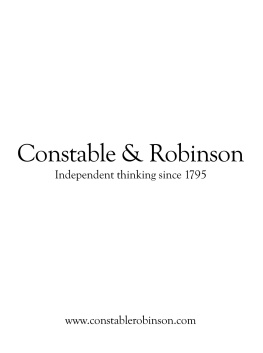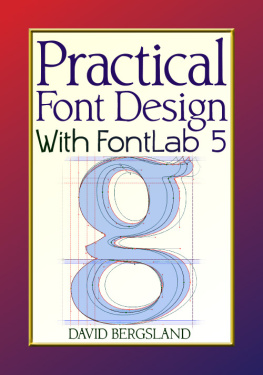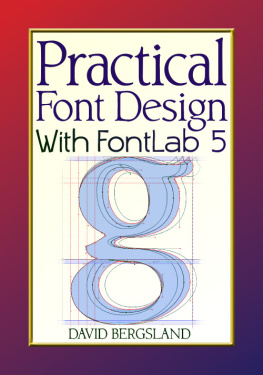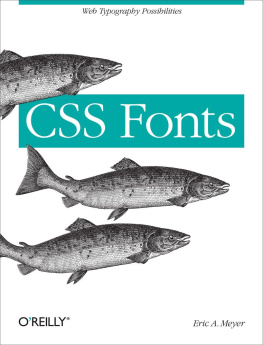Font Psychology:
Why Fonts Matter and How They Influence Consumer Behavior
Richard G. Lewis
Riana Publishing
Copyright 2021 - All rights reserved.
The content contained within this book may not be reproduced, duplicated or transmitted without direct written permission from the author or the publisher.
Under no circumstances will any blame or legal responsibility be held against the publisher, or author, for any damages, reparation, or monetary loss due to the information contained within this book, either directly or indirectly.
Legal Notice:
This book is copyright protected. It is only for personal use. You cannot amend, distribute, sell, use, quote or paraphrase any part, or the content within this book, without the consent of the author or publisher.
Disclaimer Notice:
Please note the information contained within this document is for educational and entertainment purposes only. All effort has been executed to present accurate, up to date, reliable, complete information. No warranties of any kind are declared or implied. Readers acknowledge that the author is not engaged in the rendering of legal, financial, medical or professional advice. The content within this book has been derived from various sources. Please consult a licensed professional before attempting any techniques outlined in this book.
By reading this document, the reader agrees that under no circumstances is the author responsible for any losses, direct or indirect, that are incurred as a result of the use of the information contained within this document, including, but not limited to, errors, omissions, or inaccuracies.
Download Three FREE Font Psychology infographics here:
https://richardglewis.com/font-psychology-infographics
Copyright 2021-Riana Publishing
All rights reserved.
Dedication
To My Wonderful Wife, Son, and Family.
Contents
Introduction
Did you ever go through the painful process of choosing a font? Nothing felt compatible, right? Then suddenly you looked at a font, and it seemed to be the perfect fit. Why did this happen? What made that specific typeface different to others? The answer is that the process occurred in your subconscious mind. That is what we are going to explore in this book. An understanding of the psychological effects of different typefaces will allow you to apply those psychological principles to your content, marketing, and design.
Font Psychology
F onts can express all kinds of emotions, such as happiness, sadness, trustworthiness etc. Most of the time our emotions are influenced by the shape of the letter or what we think about a letters shape. Font choices play a vital role in how the audience perceives the content. So, while choosing a font, you should consider the emotion you feel when viewing each font.
There is no shortage of brands that try to attract audiences with slick looking fonts, signage, or logos. Think of the glittering names of the casinos in Las Vegas or Google's recent changes to their logos.
Research has indicated that fonts can affect our perceptions. One experiment involves serving identical Jellybeans to two different groups. The Jellybeans were labeled with the words, Eat me.
However, the phrase Eat me was printed in a rounded font for one group and a jagged font for the other group. It turned out that the people in the jagged font group perceived the Jellybeans as quite a bit sourer than the other group.
This effect occurs due to the subconscious suggestion projected by the font used .
Fonts, like many visual stimuli, influence us even if we are not conscious of their influence. Think about clothes. When we meet someone, their clothes make an impression on us, and we make a subconscious judgement. When you talk to someone, they take less than 15% of the information from what you say. The rest of the information comes from your body language or your overall appearance. We love to judge people by their appearances. All of us make assumptions about one another. You might not be aware of this as it happens in our subconscious mind .
Fonts can also influence us subconsciously. We use our conscious brain to read the words. So we think that we are not really paying attention. Subconsciously, we are paying attention to the details. For example, when we look at something round and red, we imagine it to be sweet and tasty to eat. But if we look at something with a coarse texture, we imagine it to taste sour or to taste bitter.
Shape Psychology
E very object we observe can be reduced to its original shape. Its origin or shape, as we like to call it. It is primitive. The three main geometric shapes, or primitives, are the circle, the triangle, and the square. Obviously, there are some shapes that are made up of more than one primitive. Lets take a closer look at the three main primitives. Starting with the circle.
The circle has no beginning or end. It gives us a sense of wholeness and completion. But, as there is no straight edge to the circle, it expresses some sort of freedom of movement. We have some real-world examples of the circle in graphic design. There are circular logos and circular symbols. These logos and designs appear friendly and approachable to us.
Squares are stable shapes. They convey a sense of dependability, solidarity and sometimes honesty. Squares are very rarely found in nature. But, as human beings, it is the one shape that we encounter the most daily. The screen you are looking at, the device, the buttons, the pixels, the walls, the pictures, the books, the tiles, the roof, the windows, the doors. Squares and right angles are everywhere.
Next comes the triangle. The triangle is a fascinating shape, and it represents what we call dynamic tension. What that means is that the triangle is stable on its base. But it is unstable when it is not on its base. So, there is a kind of duality. Triangles also give a sense of warning. In nature, when we see triangles, we subconsciously associate them with spikes or sharp teeth or thorns. Triangles can also be used as arrows. They can direct movement depending on which way they are pointing. So, logos or signs with a triangular shape often give us a subconscious sense of warning .
That was Font Psychology 101.
Fonts vs. Typefaces
Y ou must have heard many people talking about typefaces and fonts as if they are the same thing. They are not.
























